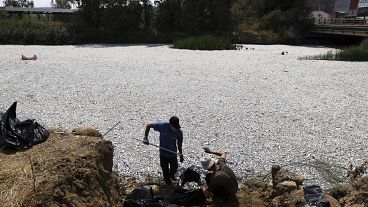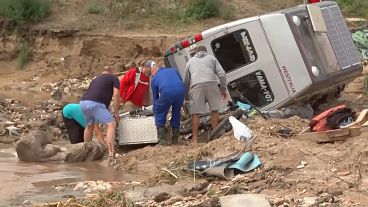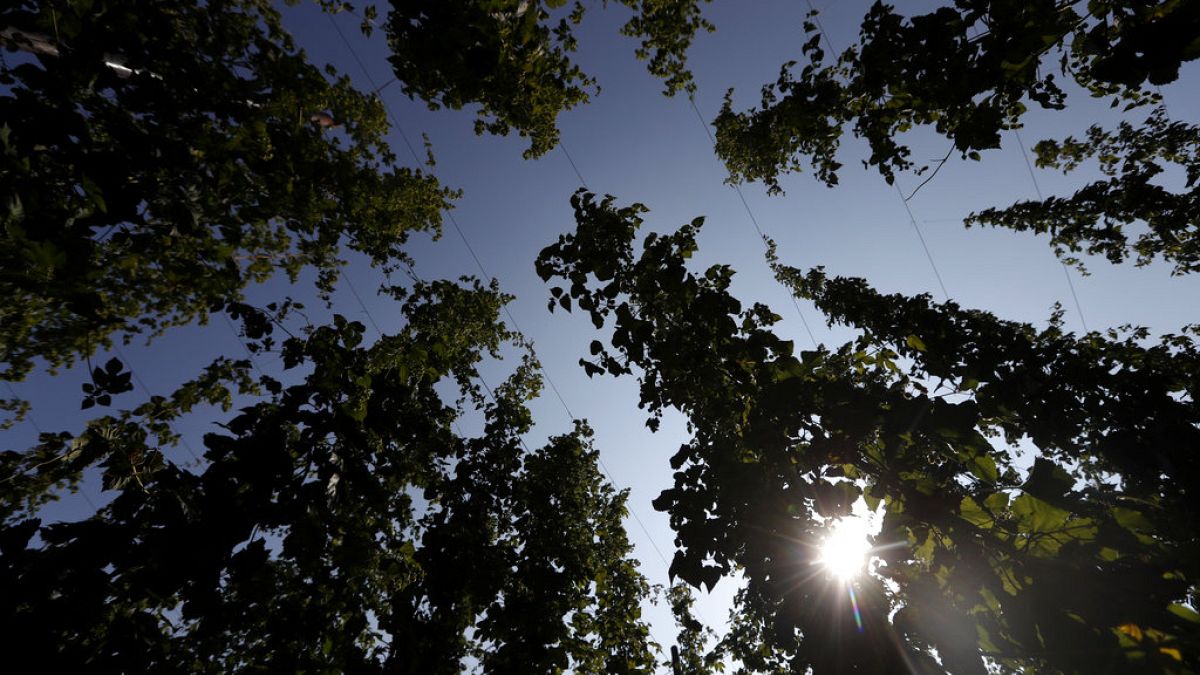Production levels hit by temperatures and falling water table but consumer prices stable so far
A severe drought in the Czech Republic, which has reached historic levels in its fifth year, is worrying growers as it increasingly hits agriculture.
Scientists say the current series of drought, which began in 2015, is the worst in 500 years.
The temperature spikes have hit hardest in the eastern regions of Moravia and Silesia and the dry spell has forced many farmers to adapt fast. Some have had to cut fruit and wine grape production by 40 per cent.
In Central Bohemia — also hit hard — one grower, Luboš Hrabánek of Farma Zadní Kopanina, says he has restructured his land to deal with the conditions.
He’s using smaller tracts for growing than the traditional multi-hectare square sectors that date from the communist days.
Hrabánek runs a family farm in the Bohemian Karst area whose main activity is animal production and breeding cattle, pigs and chickens. His four 10-hectare tracts also produce alfalfa, cereals and sometimes corn feed for his animals.
Despite recent rains, which have helped somewhat, Hrabánek has been “strongly impacted by the drought”, he said.
“Long-term care and care of the soil is important. Maybe that's why we focus anxiously on the principle of regular crop rotation.”
Besides using ancestral methods, he said “we try to grow crops that are not very demanding on water. We have not yet had to resort to artificial irrigation”.
The farm’s strategy has allowed it to avoid produce price hikes so far. “Our goal is not to spew production at all costs,” says Hrabánek, adding that his operation tries to tailor production to local needs.
Another farmer in the region — who produces artisanal honey, beets and greens that he markets directly in Prague — says water scarcity has forced him to irrigate year-round.
“We’re one of the only farms in our area still growing vegetables,” he said, noting that pumping from wells gets harder every year. Tensions are growing with neighbouring farms as the water table falls, he added.
Makers of craft beer in the Czech Republic – a product increasingly in demand at home and abroad – say they’ve been watching the prices and availability of hops, the country’s most famous export.
A representative of Chroust craft beer says the company buys Bohemian hops for its prime lagers and has not yet seen prices rising but acknowledges “growers are being hit. It could happen at any time”.
Winter wheat is at risk, say many farmers, but corn, with deeper roots, has fared batter. Meanwhile, other crops are likely to be ploughed under, unless more rain arrives soon.
The drought has also harmed grass and alfalfa production, needed for cattle feed, notes Robert Kučera of the Agrarian Chamber of Ostrava.
An agency set up to study the drought and provide data, Intersucho.cz, reports that the Moravian-Silesian Region is in “one of the worst situations” with extreme drought at levels not seen for the last 50 years.
Authorities are supplying some towns with water tanks this year as they did in 2019, as other add-on effects include the spread of bark beetles and Moravian winemakers planning for a future shift from white wine production to red grapes, which are less dependent on water.
As for the effects on consumers, it’s clear that grocery prices are up but less certain is what role the drought has played, said Patrik Rozumbersky of market analyst company UniCredit. Rising food prices have more likely been driven by effects of the coronavirus, which held up shipments of produce at the country’s borders. A shortage of agriculture workers, who were blocked from travelling to the country from the east, is also a likely culprit, according to Rozumbersky.
Grocery chains Billa and Albert declined to comment on price changes but Prague consumers did appear to bulk up on packaged goods, which may also have had an effect – though the Czech Republic did not see binge buying at the level witnessed in the UK and US during the COVID-19 lockdowns.
Consumer food price rises were also in line with current inflation reports showing a rate of 7.8 per cent, a rise from last year’s 6.4 per cent rate, according to Rozumbersky.
Czech crop prices, he adds, depend not just on local production levels but on “the quality of harvest in the whole European continent as the price of individual products is formed on the international market”.
At the same time, said Rozumbersky, “I think that the possible effect of drought might become more intensive later in the year as soon as the impact on the harvest is clearer.”
Industry organisations have been cautioning farmers too: the Czech Agricultural Chamber calls groundwater levels “strongly below normal overall,” noting that 71 per cent of wells are at unusually low water depths.
In addition, low water levels have hit key watersheds in the upper Ohře, Lužická Nisa and Smědá river basins, which the chamber calls “strongly below normal.” Also drying up are natural springs, of which 79 per cent are suffering from “with severe or extreme drought”.












